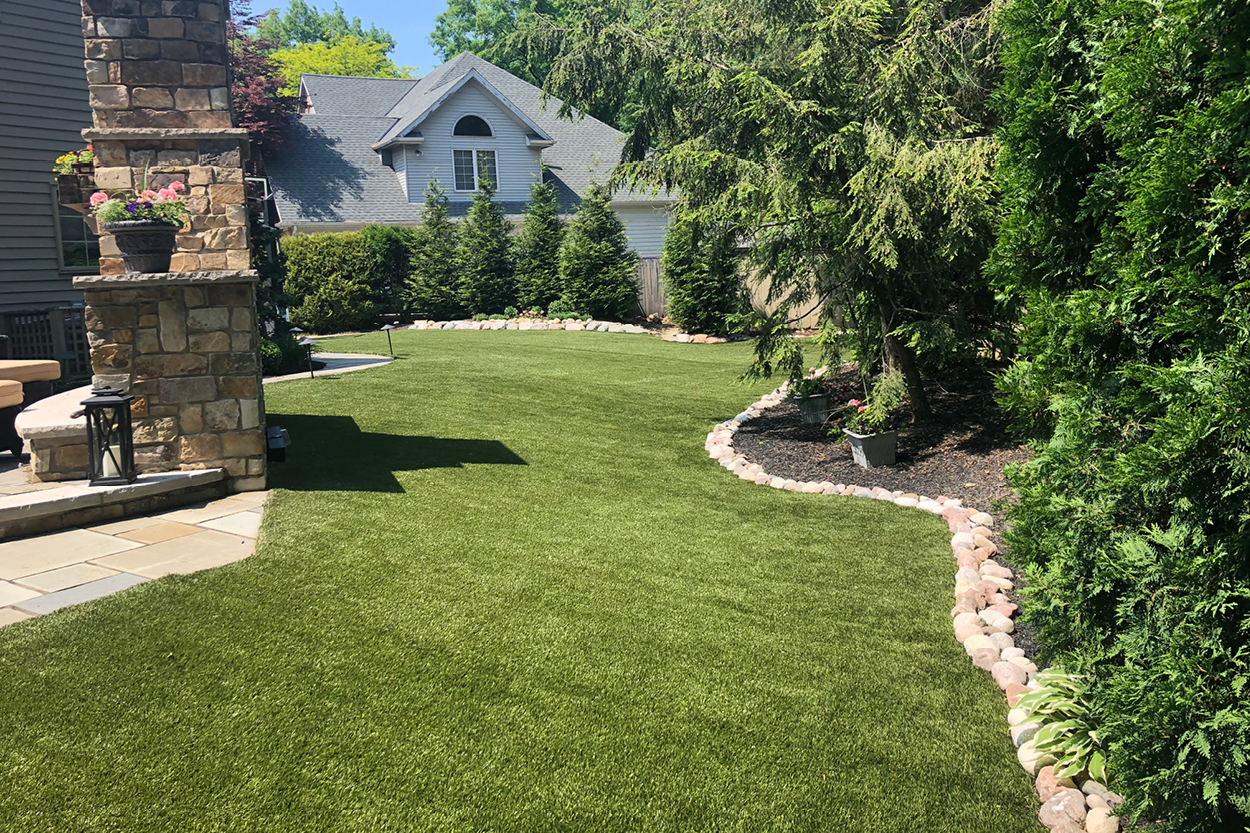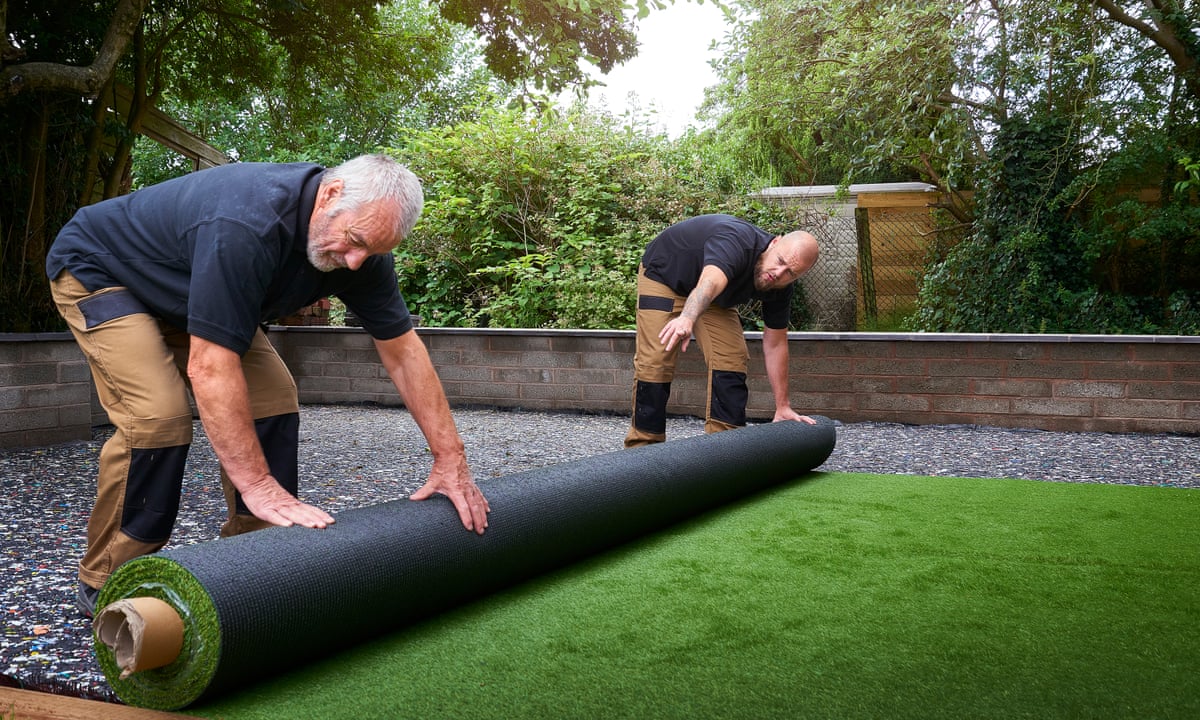Experience a Perfect Lawn with Arizona Artificial Turf for Any Outdoor Space
Experience a Perfect Lawn with Arizona Artificial Turf for Any Outdoor Space
Blog Article
Look Into the Environmental Perks of Opting for Artificial Grass Solutions
The fostering of synthetic turf services offers an engaging opportunity to address pressing ecological obstacles. By substantially minimizing water use and lessening the application of unsafe chemicals, these options not only promote lasting landscaping but additionally secure neighborhood environments. The reduced carbon impact associated with lowered maintenance activities adds to a more lasting strategy to land management. Nevertheless, the implications of these benefits expand past plain preservation efforts, raising inquiries regarding their lasting effect on environment preservation and total ecological balance. Checking out these dimensions reveals an intricate interaction worth considering.
Water Preservation Advantages
One of the most significant advantages of man-made turf is its capacity to conserve water. In comparison, synthetic grass does not need watering, substantially lowering the general need for water sources.
By eliminating the demand for normal watering, synthetic grass contributes to sustainable landscape methods and assists mitigate the environmental effect of too much water consumption. The preservation of water extends to the reduction of runoff, which can lead to soil disintegration and river air pollution.
In addition, the installation of man-made grass allows house owners and communities to assign water sources more effectively, focusing on important uses such as drinking water and agriculture. The shift in the direction of synthetic grass not just advertises accountable water use however also lines up with more comprehensive ecological objectives targeted at protecting natural deposits.
As areas significantly prioritize sustainability, the water preservation advantages of artificial lawn present a compelling instance for its adoption in property and industrial landscaping jobs.
Minimized Chemical Usage
The transition to synthetic grass substantially lowers the reliance on chemical therapies commonly used in natural lawn upkeep. Conventional lawn management generally includes the application of pesticides, herbicides, and plant foods to promote growth and control insects. These chemicals can pose threats to human health, neighborhood wildlife, and the atmosphere, adding to soil and water contamination.
On the other hand, synthetic grass removes the requirement for these harmful compounds. As soon as set up, it calls for minimal maintenance, mostly including routine cleansing and seldom infill replenishment. This decrease in chemical use not just profits the instant setting yet additionally adds to broader environmental security. By minimizing the release of artificial substances into the community, synthetic grass advertises healthier dirt and water supply.
In addition, the lack of chemical overflow related to synthetic grass installments assists secure regional rivers from air pollution, sustaining marine life and preserving biodiversity. Arizona artificial turf. As neighborhoods progressively prioritize lasting techniques, going with synthetic grass offers a feasible remedy that aligns with ecological conservation goals. Through this change, homeowner can take pleasure in lavish eco-friendly spaces without compromising ecological health, leading the way for an extra sustainable future
Reduced Carbon Impact

Moreover, the setup of synthetic grass can result in significant water conservation. All-natural grass call for considerable quantities of water for irrigation, which not only contributes to the carbon footprint connected with water removal and therapy but also stress local water resources. In comparison, synthetic grass requires marginal upkeep, calling for explanation no watering, consequently considerably lowering water usage and its connected power expenses.
Furthermore, the long life of artificial grass contributes to its reduced carbon impact. With a life-span of as much as 15 years or even more, the need for regular substitutes is decreased, leading to much less waste and lower energy intake in manufacturing and dealing with traditional yard alternatives. Generally, synthetic grass presents a sustainable option for ecologically aware landscape design.
Habitat Conservation
Environment conservation is a critical consideration in the debate over Clicking Here landscape design choices, especially when comparing synthetic grass to all-natural turf. Natural turf yards typically require extensive upkeep, including using chemicals, fertilizers, and herbicides, which can negatively affect regional ecosystems. These chemicals can seep right into the soil and waterways, damaging native vegetation and fauna and interfering with local environments.
In contrast, fabricated grass provides a chance to lower the environmental impact of landscape design. By deciding for synthetic grass, house owners can lessen the disruption of natural habitats associated with conventional grass treatment practices. Fabricated turf removes the need for hazardous chemicals, thus shielding neighboring wildlife and keeping the stability of bordering communities. In addition, the setup of synthetic grass can lead to the conversion of former lawn areas into more biodiverse landscapes, such as pollinator yards or indigenous plant areas, which can support neighborhood wildlife.
Inevitably, the transition to synthetic grass not just saves water and reduces upkeep efforts but likewise promotes an extra harmonious partnership in between human tasks and the natural surroundings, promoting environment conservation in the process.
Long-Term Sustainability
Long-term sustainability is a vital variable in evaluating the advantages of man-made lawn over typical turf yards. One of the most considerable benefits of synthetic grass is its sturdiness; it can last approximately 15-20 years with marginal upkeep, whereas natural grass requires frequent reseeding and substitute. This long life lowers the demand for constant sources, such as water, fertilizers, and chemicals, which are essential for preserving a healthy and balanced yard lawn.
Additionally, fabricated turf adds to a decrease in carbon exhausts connected with grass care equipment. Typical lawns frequently require gas-powered mowers, trimmers, and blowers, all of which contribute to air pollution. Artificial turf companies phoenix. In comparison, synthetic grass removes the requirement for such equipment, promoting a cleaner environment
Furthermore, the production of synthetic grass increasingly uses recycled materials, enhancing its sustainability account. As suppliers take on environment-friendly methods, the environmental see page impact of synthetic grass remains to diminish.

Conclusion
The fostering of synthetic turf services provides significant ecological advantages, consisting of considerable water conservation, minimized dependence on hazardous chemicals, and a lower carbon footprint. Fabricated turf aids in preserving natural environments by lessening land disturbance and advertising lasting sustainability through the usage of resilient materials. Collectively, these aspects highlight the possibility of synthetic grass to add favorably to ecological health and wellness and supply a practical alternative to typical landscaping methods in a progressively resource-conscious globe.
In comparison, synthetic grass does not need watering, dramatically minimizing the general need for water resources. By reducing the release of synthetic substances right into the community, synthetic lawn promotes much healthier soil and water systems.
Additionally, the installation of synthetic turf can result in considerable water preservation. In comparison, artificial turf requires minimal upkeep, needing no watering, thereby dramatically decreasing water use and its associated power expenses.

Report this page